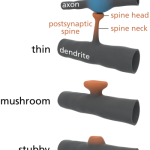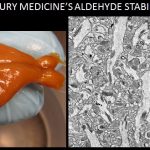Opinion: The prize win is a vindication of the idea of cryonics, not of unaccountable cryonics service organizations
With the announcement that the newly invented Aldehyde-Stabilized Cryopreservation (ASC) procedure has won the small mammal phase of our Brain Preservation Prize, many people have recently asked me “Should cryonics service organizations immediately start offering this new ASC procedure to their ‘patients’?” My personal answer (speaking for myself, not on behalf of the BPF) has been a steadfast NO.
It should be remembered that these same cryonics service organizations have been offering a different procedure for years. A procedure that was not able to demonstrate, to even my minimal expectations, preservation of the brain’s neural circuitry. This result, I must say, surprised and disappointed me personally, leading me to give up my membership in one such organization and to become extremely skeptical of all since. Again, I stress, current cryonics procedures were NOT able to meet our challenge EVEN UNDER IDEAL LABORATORY CONDITIONS despite being offered to paying customers for years[1]. Should we really expect that these same organizations can now be trusted to further develop and properly implement such a new, independently-invented technique for use under non-ideal conditions?
Let’s step back for a moment. A single, independently-researched, scientific publication has come out that demonstrates a method of structural brain preservation (ASC) compatible with long-term cryogenic storage in animal models (rabbit and pig) under ideal laboratory conditions (i.e. a healthy living animal immediately being perfused with fixative). Should this one paper instantly open the floodgates to human application? Under untested real-world conditions where the ‘patient’ is either terminally ill or already declared legally dead? Should it be performed by unlicensed persons, in unaccountable organizations, operating outside of the traditional medical establishment with its checks and balances designed to ensure high standards of quality and ethics? To me, the clear answer is NO. If this was a new drug for cancer therapy, or a new type of heart surgery, many additional steps would be expected before even clinical trials could start. Why should our expectations be any lower for this?
The fact that the ASC procedure has won the brain preservation prize should rightly be seen as a vindication of the central idea of cryonics –the brain’s delicate circuitry underlying memory and personality CAN in fact be preserved indefinitely, potentially serving as a lifesaving bridge to future revival technologies. But, this milestone should certainly not be interpreted as a vindication of the very different cryonics procedures that are practiced on human patients today. And it should not be seen as a mandate for more of the same but with an aldehyde stabilization step casually tacked on.
When then?
If this was a new type of heart surgery the answer would be clear –demonstration of long-term recovery in animals, then demonstration of recovery in human clinical trials. But by its very nature cryonics cannot be held to this same standard since it is predicated on recovery by future technologies not yet invented. Holding cryonics to that standard would needlessly be dooming potentially millions of people to death. It would be equivalent to demanding that the polar ice caps melt entirely before acknowledging there is sufficient proof that CO2 emissions should be curtailed. Or demanding demonstration of recovery of an extinct species from its DNA before beginning to store samples of DNA from the many species that are endangered today. There are plenty of examples where prudent conservation measures are taken today based on future projections. Cryonics should be treated no differently.
So what evidence should reasonably be required prior to human application? When I proposed the Brain Preservation Prize in 2010 I was putting forward one possible answer –demonstrate that the ultrastructural details of the connectome are preserved across the intact brain. This benchmark was not chosen arbitrarily but was based on our best neuroscience models of how memories are structurally stored.
The McIntyre and Fahy ASC paper represents the first demonstration of whole-brain connectome preservation that has passed the gauntlet of scientific peer-review, and that has (in rabbit) passed review by third-party electron microscopic survey imaging (https://www.brainpreservation.org/asc_rabbit_fulleval/ ). This basic result should now be replicated by other laboratories, again using healthy living animals under ideal surgical conditions. Then an experienced medical research team should develop this into an emergency surgical procedure that could be performed reliably on humans under more realistic conditions -simulating conditions typical in terminally ill patients or ones that have very recently been declared legally dead. These experiments would again use an appropriate animal model, testing the boundaries of what quality of brain preservation can be expected under less-than-ideal conditions. And of course, all of these results would also be subjected to peer-review by other medical professionals.
Once the parameters of a human surgical procedure are known and approved, the team would set up an appropriate facility (in a hospital for example) to conduct the first human clinical trials. These would be setup like any other surgical clinical trial, with careful thought given to the unbiased measurement of outcomes. This would include a final perfusion of the preserved brain with an x-ray or MRI opaque dye so that the extent of vascular access could be quantified for each and every trial patient. And it would include electron microscopy on selected brain biopsies from each trial patient to document the quality of ultrastructural preservation obtained. The results of these clinical trials would then themselves be subjected to peer-review by independent medical professionals.
Once reliable preservation is demonstrated in such clinical trials, the procedure could finally be rolled out in hospitals across the world, very possibly resulting in the saving of millions of lives when revival technologies are finally perfected perhaps sometime early next century.
This is the path that I envision eventually leading to widespread, inexpensive access to a high-quality, reliable brain preservation. It is certainly possible that existing cryonics service organizations could play a positive role in such development, but only if they start playing by the rules of peer-reviewed science and evidence-based medical trials. They must engage directly with the mainstream scientific and medical communities, openly publishing their results in animal models and forcefully arguing, when appropriate, their case that it is time to move to human trials.
If instead they short circuit this entire process, going directly to (deceased) human application without even attempting to argue their case based on rigorously documented and replicated animal trials, then they will have succeeded only in making it much harder for other researchers to argue that case. A rush to human application may sound humanitarian, but I believe it will only result in further delaying the eventual, inevitable embracing of cryonics (and other methods of brain preservation) by mainstream science and medicine. Simply put, rushing to human application will, in my opinion, only result in many more lives lost over the long run.
-Kenneth Hayworth
The views expressed are mine alone, and do not necessarily reflect the opinions of the BPF or its diverse group of associates.
[1] To be fair, no cryonics service organization even entered into our prize competition directly, but a supposedly similar protocol was tested in an animal model and failed to meet our minimal expectations for proof of ultrastructural brain preservation (https://www.brainpreservation.org/21cm-cryopreservation-eval-page/ ). There is some argument as to whether this test showed real damage to the brain’s circuitry or simply rendered it so shrunken and squashed as to be uninterpretable by today’s electron microscopy procedures. Whichever is the case, it represents a serious lack of evidence of efficacy. Indirect evidence (based on electrophysiology) of connectome preservation has been presented in the cryopreservation of 0.5mm thick slices of hippocampus, but no such evidence has been presented for intact brains which apparently require use of a radically different cryopreservation protocol. I remain open to new evidence, of either a direct or indirect nature, that existing cryonics protocols preserve the connectome, but for now I remain profoundly skeptical.










Ken, congratulations to the Brain Preservation Foundation and 21st Century Medicine, and also to the Max Planck team, for this spectacular result. As you say, “The fact that the ASC procedure has won the brain preservation prize should rightly be seen as a vindication of the central idea of cryonics – the brain’s delicate circuitry underlying memory and personality CAN in fact be preserved indefinitely, potentially serving as a lifesaving bridge to future revival technologies.” I have no doubts that upcoming advances, based on or inspired by the scientific work done for the Brain Preservation Prize, will someday permit establishing operational “cryonics for uploaders” procedures for human patients, based on solid science.
As a scientist, I totally agree that the cautious step by step approach that you recommend is the scientifically correct approach, and I see the danger that “A rush to human application may sound humanitarian, but I believe it will only result in further delaying the eventual, inevitable embracing of cryonics (and other methods of brain preservation) by mainstream science and medicine.”
But as a person I can’t ignore the fact that we are talking of human beings here. For terminal patients with a short life expectancy, even a remote chance is better than no chance. Even more to the point: a relatively young cryonics activist, a friend of mine, died suddenly only a few hours ago. His local friends are fighting against the clock to realize his cryonic preservation dream. I have no power to choose what to do with his brain. But if I had such power, I would choose the best of the available options, even if it doesn’t fully persuade the scientist in me. Why? Because it’s what HE wanted (and I guess I would want the same), doesn’t harm anyone else, and of course it’s no risk to him since the only alternative is permanent death.
I would choose the best of the available options, because I can’t choose the best of the unavailable option. But if a new option, scientifically more solid than those currently on the table, were available, I would choose that.
I am not recommending that the BPF should rush to human applications or short circuit the entire scientific process. Actually, as a BPF advisor, I think yours should be the official position of the BPF. But at the same time I would welcome more adventurous initiatives by other parties, including the existing cryonics organizations, to provide last-chance options to human patients with nothing to lose.
This is essentially equivalent to the issue of clinical trials and lengthy approval processes for new drugs. I think having reputable scientific organizations and official bodies than insist on scientifically rigorous tests of proposed new therapies before making such therapies available to the public at large is good, but at the same time I think the availability of last-chance, not-(yet)-mainstream options to terminal patients, perhaps administered in borderline clinics in unregulated jurisdictions, is also good. Let thousands flowers bloom.
It doesn’t seem plausible that clinical trials would be allowed without prior demonstration of revival. Clinical trials are used to determine safety and efficacy, neither of which are related at all to structural preservation. It’s clearly not safe because it causes immediate death, and you can’t measure efficacy without revival. I just don’t get it.
Regarding the statement,
“So even the straight frozen people will be brought back to life.”:
They may only be brought back as amnesiac clones of the original person. The fact that survival after brain repair is a continuum doesn’t mean that everybody survives. Merkle and Drexler like to say that if they worked for NSA, they would regard freezing as a poor brain erasure technology. Where straight freezing at low cooling rates is concerned, that remains to be seen.
There comes a time to act in good faith and try to do the best you can to save human life. Terminal people have nothing to gain from waiting for a better option that is not available yet. We are not simply derelicts but compassionate good samaritans, who with our own time and money are doing what we think is best under extremely limited circumstances. I think there is room for current cryonics and for scientific rigor to work together. They are not mutually exclusive and there are plenty of examples of this in the world. The AHA American Heart Association connects the best cardiologists with a public outreach programs designed to promote CPR to everyday lay people. They realized that while the best doctors and medical equipment are preferential to cardiac arrest patients, resources and availability dictate embracing laypeople to perform CPR in emergent settings. There is a saying in EMS. “Bad CPR is better then no CPR”. So you do the best you can now and learn to do better CPR. Cryonics is just another form of CPR.